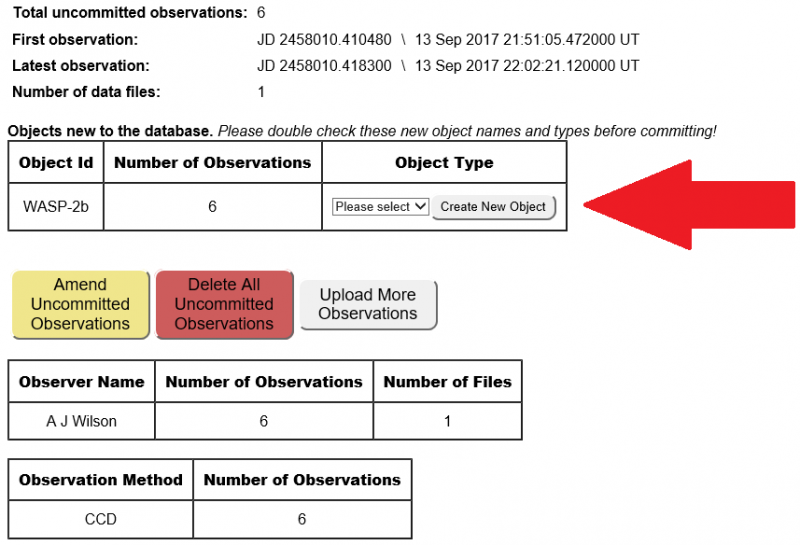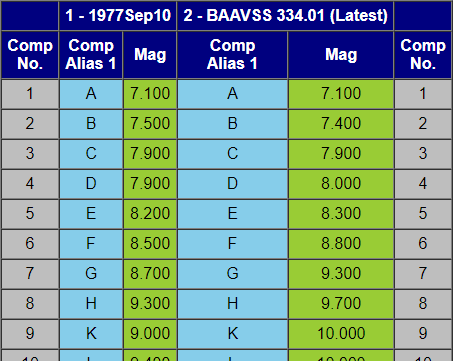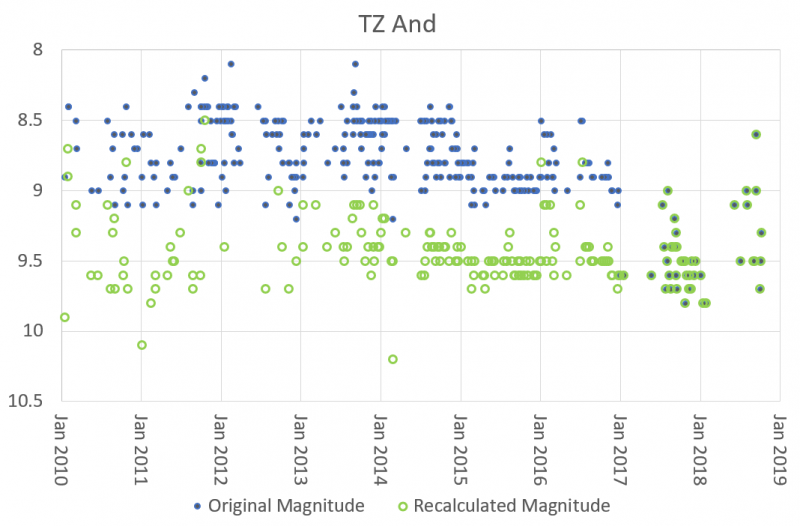2019 January 13
Enhancements to the BAA Photometry Database
The start of 2019 has seen some significant changes to the BAA Photometry Database.

Exoplanet and Asteroid Photometry
In order to provide a repository for observations made by members of the Exoplanet Division and the Asteroid & Remote Planet Section, the Variable Star Section Database has been rebranded as the “BAA Photometry Database”. This is more than simply a name change as the type of object is now recorded in the database so that observations of exoplanets, asteroids and variable stars can be distinguished from one another. When observers upload observations for an object not already in the database, they will be prompted to select the type of object.
At the same time the look and feel of the BAA Photometry Database has been updated to match the BAA Spectroscopy Database.
Recalculation of Historic Variable Star Observations using Modern Magnitudes
A new feature has been introduced when plotting light curves and downloading observations. Historic visual observations may now be recalculated using modern comparison star magnitudes by selecting new options at the bottom of the Review Observations web page. This cleans up the light curves, removing bumps and scatter caused by different values for comparison star magnitudes that have been used over the decades. However, it should be treated with caution, as comparison stars from old charts/sequences do not all have magnitudes in the latest chart/sequence, in which case the magnitude will not be recalculated.

Measurements of variable stars are made by deducing the magnitude of the variable from carefully chosen comparison stars on a chart, forming what is called a ‘sequence’ of comparison star magnitudes. Over the decades, these magnitudes have been updated as more accurate magnitudes become available with improvements in technology. Each time this happens a revised chart and sequence are created. For some stars this has happened many times since the Variable Star Section was formed in 1890 and the changes can be several tenths of a magnitude or more.
A good example of the benefits of recalculation are provided by the irregular long period variable star TZ And. Between the original chart from 1977 to the new chart created by the VSS Chart Secretary John Toone in 2016, many of the comparison star magnitudes have been updated, in one case by a whole magnitude!
The effect of the recalculation on the light curve is dramatic. The original observer magnitudes show a large dip at the start of 2017, after the new chart was released. With the recalculated magnitudes that dip vanishes, and it becomes apparent that TZ And was fainter than previously thought.

I would like to thank Tracie Heywood for her help in specifying the recalculation and filling gaps in the data so the recalculation succeeds for more of the observations. While this is new functionality for the website, recalculation was originally built by previous VSS Secretary Dave McAdam, in the original Visual Observation Database.
Support for AAVSO Extended File Format
The BAA Photometry Database now allows a modified version of the AAVSO Extended File Format to be used for uploading observations. In due course support for the native AAVSO format will be introduced, but this is dependent on the AAVSO releasing some minor changes to their format.
http://www.britastro.org/vss/data_submission.htm
Anyone wishing to submit photometry should contact the relevant Section or Division Director and the Photometry Database Manager at photdbm@britastro.org.
Andy Wilson, Photometry Database Manager
| The British Astronomical Association supports amateur astronomers around the UK and the rest of the world. Find out more about the BAA or join us. |
